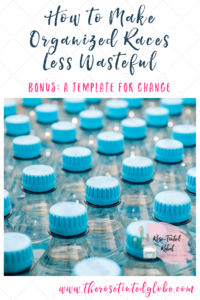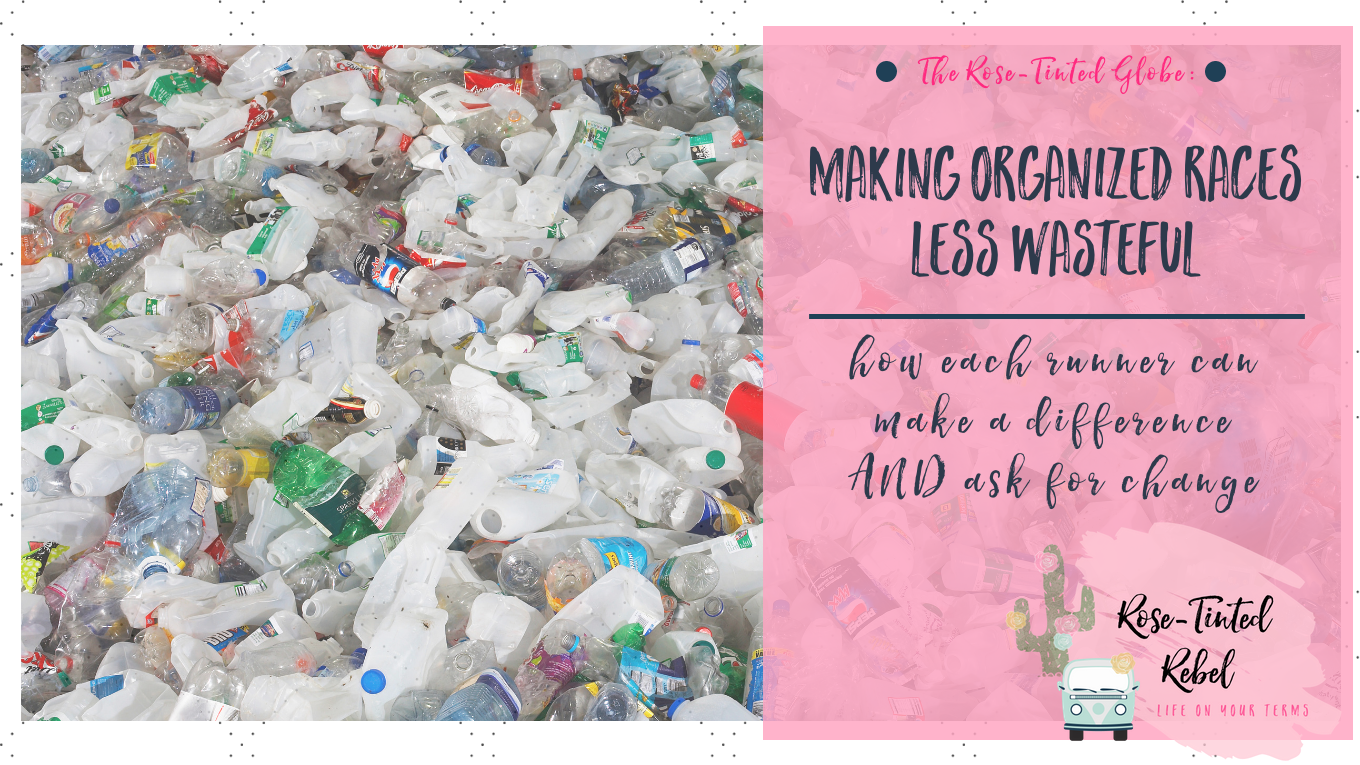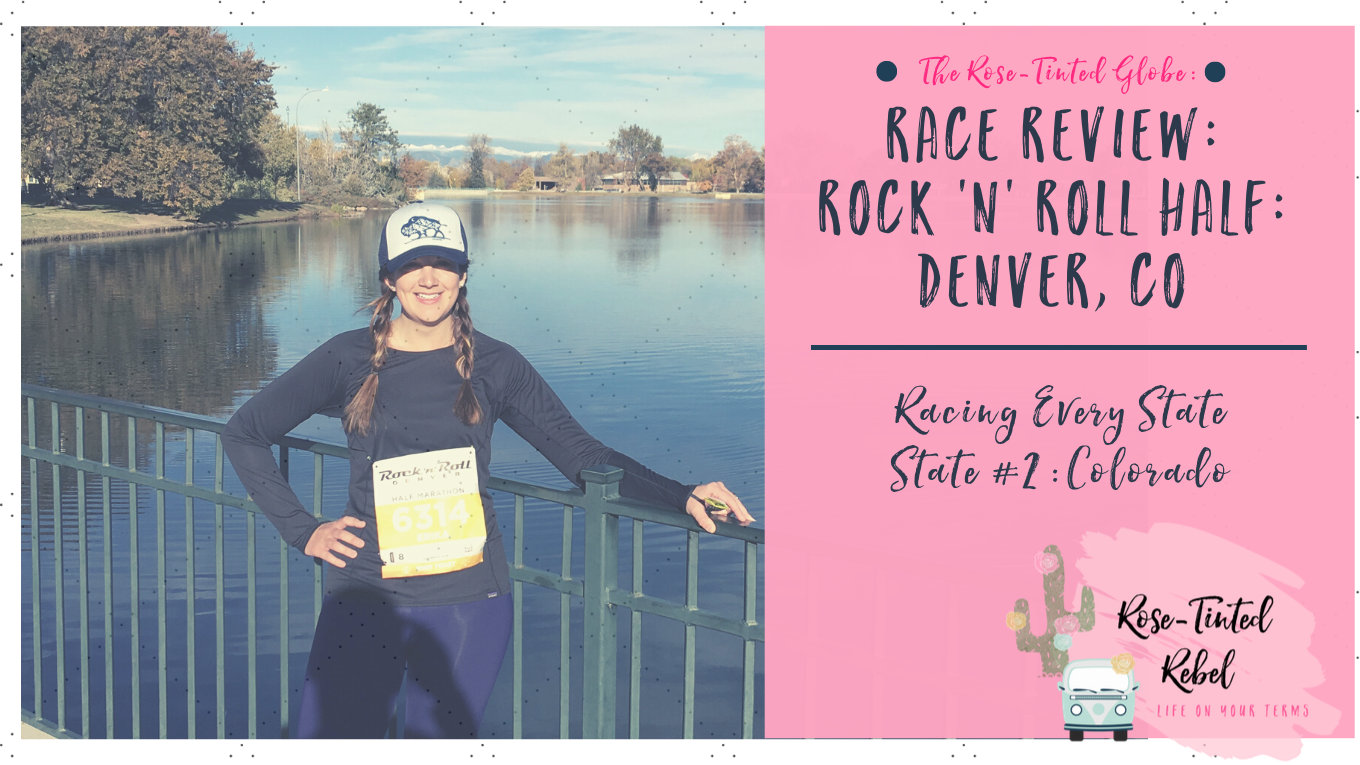I love to run organized races. The process of choosing a new race, the anticipation of preparing and counting down the days, and the race-day experience: I love every part of it. I’ve been participating in races for almost ten years, but it was only recently that I realized a major issue I have with organized races. The good news: I think it’s an issue that can be fixed relatively easily with just a little focused effort. The bad news: I don’t think most runners even think twice about it when they are racing. The issue: races create an inordinate amount of single-use trash. So, how do we make organized races less wasteful?
What exactly is the problem?
Let’s start by really looking at the problem. It varies from race to race, to be sure; I’ve participated in races where I barely noticed it at all. What really brought this problem to my attention was our experience running back-to-back half marathon weekends last year. The variance between these two races was extremely apparent and honestly, a little sickening.
Between the goody bags at packet pick-up that are usually stuffed with flyers and coupons, race fuel or snacks packaged in plastic, and single-size samples of body or personal care products, the race weekend starts off with a bang of unnecessary garbage. It gets worse once you get out onto the course: at a recent race, I was appalled by the amount of wet wipes and paper towels that runners were grabbing, barely using, and then throwing directly on the ground. Besides a basic lack of decency, it was so grossly wasteful.
Now, I’m not begrudging anyone the proof of their race; I snap a selfie at every start and finish line. I love to rock a quality race t-shirt as much as any other runner. My husband and I recently set a goal to run a half marathon in every state, and I’ve since spent time brainstorming how to put together a kick-ass display for each of those medals. However, there are so many things that most runners won’t need or use in goody bags, and there are way better alternatives than using a ton of single-use garbage on the course.
What can we do?
What I’d love to see is for major racing organizations to pledge to use less (or no) single-use items at races, and to encourage runners to observe zero-waste running practices. Until that happens, I’ve developed a list of ways that individual racers can help cut down on their own waste during runs. Read on for ways to be a little more planet-friendly during your next race!
1. Choose a cupless, wasteless race.
Excitingly, many races are now able to bill themselves as zero-waste races! While this is somewhat misleading, (zero-waste in this case actually means that less than ten percent of the waste from the race goes to a landfill), it’s a far better choice than races that aren’t yet making a concerted effort towards lessening their waste. My personal favorite cupless series is Ragnar Relays. I’ve run five Ragnars so far and wrote about my first-ever Ragnar experience HERE.
2. Carry a reusable water bottle.
The sheer amount of disposable plastic water bottles and paper cups that you see on the roads at races is staggering. Most of this waste is recyclable, but that shouldn’t distract from the fact that it is easily preventable in the first place. Carry your own water bottle and have it filled at each water station. I’ve done this for several races, and volunteers are always happy to help. It might slow me down by a few seconds, but I’m okay with the trade-off.
3. Terracycle your single-packaged gels or foods.
Surprisingly, GU gel wrappers are recyclable through Terracycle. Keep your wrappers throughout your training and race season and then find a local drop-off in your area to send them in for you or send them in yourself using the information on Terracycle’s website (they’ll even send you a shipping label!) You can also see if the race you are running will have a location for items that can be Terracycled. Many races are now starting to do this!
4. Compost your post-race foods.
Almost every race I’ve ever attended has had bananas or apples at the finish line, and often both. These foods are easily compostable. If the race you are running doesn’t have a section for compostables, take them with you and add them to your at-home compost pile. (Not sure how to compost at home? I’ve written about that too; check it out HERE.)
5. Buy carbon offsets for your race and travel.
If you’re not running your local hometown race, you’re going to need to travel for your race. Whether car, train, or plane, you’ll be using a lot of resources (most notably carbon) for this. One way to attempt to offset this is by purchasing carbon offsets. Some races will offer this option or will show you the math behind each person’s carbon offset needs. If you’re new to carbon offsets or aren’t sure how much carbon you’ll be using, check out this article by the New York Times for an overview. If you’re ready to purchase some carbon offsets, why not start with Native Energy, where you can sign up for a monthly or quarterly offset subscription, or complete a one-time purchase.
6. Opt out of the packet or refuse to take it.
If you must have a race medal, I can’t fault you for that. But really consider how many race t-shirts one person needs; if you have more than ten already, you might have enough. Are you even wearing the race shirts you have now? Opt out of receiving the t-shirt and the goody bag full of single-use nonsense that you likely won’t use anyway. If you can’t arrange to opt out before you show up at packet pick-up, just refuse to take these items. Grab your bib and your safety pins and just leave! It’s highly unlikely that anyone is going to force you into taking these items. Obviously it’s better to opt out well before this point, as it will save race directors from ordering extra shirts or materials, but if it comes down to it, don’t take anything that you don’t want or won’t use because it’s likely just going to end up in a landfill.
7. Send an email to the race directors asking them to cut down on their waste and/or offer a zero-waste option.
I’ve written and included a template below that can easily be personalized and sent to the race director of your next race. Seriously, send this to all the runners you know and to every race director you come across. It takes all of us to address sustainability and to make changes for our planet; let’s do it!
Attn: Race Director
Hi! My name is _________ and I’m registering for ____________________. Thanks for all your hard work on this race!
I’m writing because I’m interested in creating and participating in a race experience that is as planet-friendly and zero-waste as possible. I’d like you to consider the possibility of offering a waste-free or at least more eco-friendly packet option. This option would allow runners to still receive their race medal and t-shirt, but to avoid any unnecessary extras that they might receive as part of their packet or at the race expo. I think most runners interested in this option would still be willing to pay the same registration fee as other runners while avoiding the extra waste that can come along with participating in a race.

Another option to consider is cutting down the amount of cups and plastic water bottles that are available on course. If you could provide self-service fill stations for water, runners would be easily able to bring their own reusable bottles. The stations would be especially helpful to have near the finish line area of the race, when many runners need to re-hydrate and plastic bottles are generally plentiful.
I also wanted to volunteer to help in any way I can with aspects of making this race less wasteful. If you are in need of volunteers to help pick up or sort trash post-race, or someone to transport waste, please let me know. I’m happy to help create a great race experience for runners and for the planet, and again, I thank you for all you do to put on a great event!
Sincerely,
Your Name





